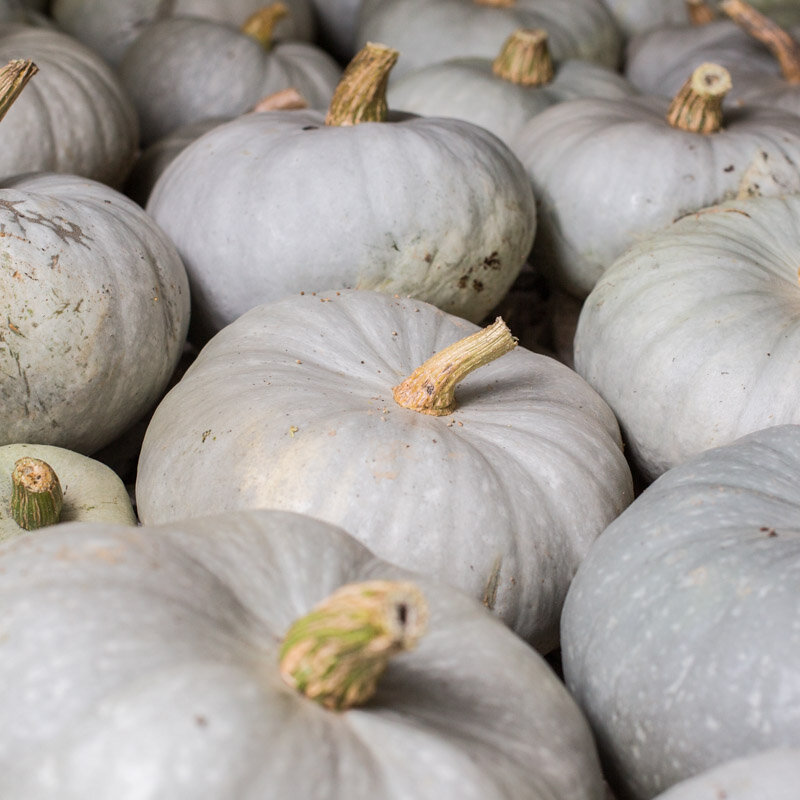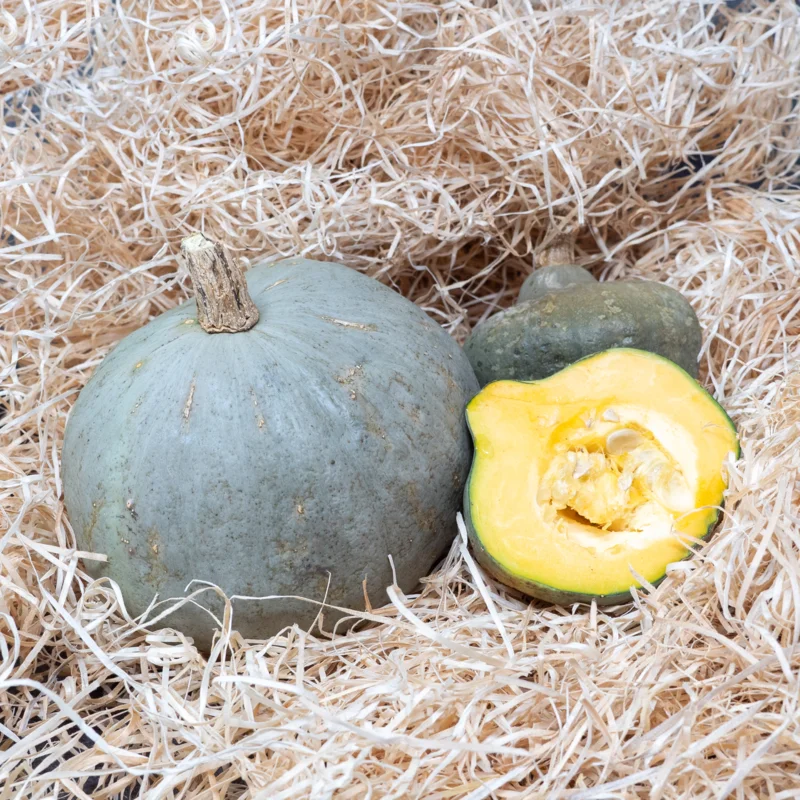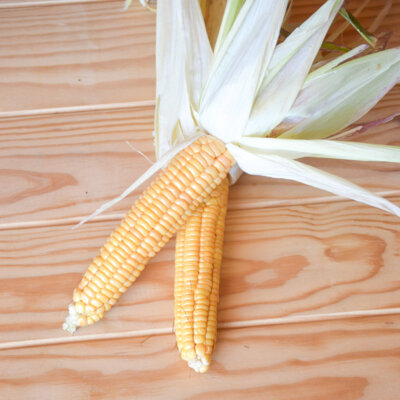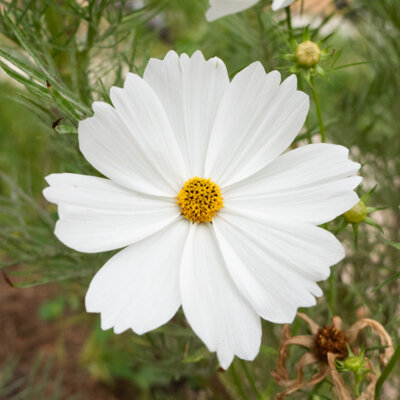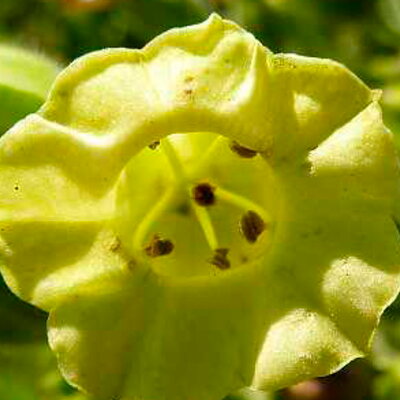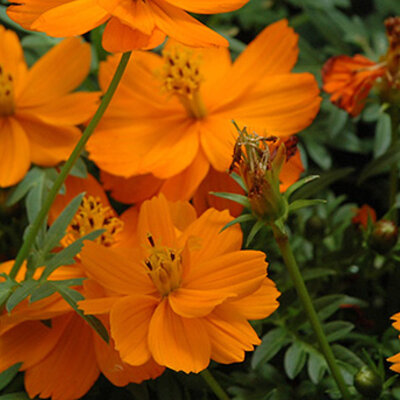Hungarian Blue - Maxima squash
This old, very runny variety produces 2 to 4 blue-gray fruits weighing 4 to 8 kg. Their thick, dense, orange-yellow flesh has a mild, low-sugar flavor. They keep for 3 to 6 months.
Description of Bleu de Hongrie squash
The Hungarian Blue squash, whose real name is "Nagydobosy Sütökok", Cucurbita maxima, is an ancient variety of pumpkin. It was brought back from Budapest in 1983 by Philippe Desbrosses. This elongated variety produces 2 to 4 flattened spherical fruits measuring up to 35 cm in diameter and weighing up to 8 kg. Their solid blue-gray skin envelops thick, firm, yellow-orange flesh with a mild, slightly sweet flavor. They keep well, and are often eaten au gratin, mashed or in soups, as an accompaniment to meats and other vegetables. Squash flowers are also edible.
Bleu de Hongrie squash seedlings
Bleu de Hongrie squash maxima is sown in pots 2 to 3 weeks before transplanting, from March to May, in bunches of 2 to 3 seeds.
Place seedlings under a light shelter, at a temperature of between 18 and 20°C, and keep the substrate moist until the seeds emerge. Be careful not to sow squash seeds too early in the season, in which case the roots will become fibrous, making growth difficult in the garden. Transplant into the vegetable garden once the last frosts have passed.
From April to June, after the last risk of frost, it is possible to sow directly in the garden in 2 to 3-seed stacks.
Prepare 2 weeks in advance holes filled with compost or organic matter, spaced 2 m apart in all directions, to accommodate the squash plants or seeds. Mulch the soil to maintain sufficient humidity and limit water evaporation.
Next to the squash, we recommend planting corn and beans, giving rise to the "three sisters" or milpa crop. Basil plants can also be planted between pumpkins to repel pests.
Harvesting and storing Hungarian Blue squash
Although the fruits of the Hungarian Blue squash can be harvested and eaten immaturely, those intended for winter storage should be picked as late as possible, before the first frosts, from July to November, when the stalk starts to dry out and the skin becomes thick. Be careful not to tear them off, but cut as close as possible to the stem, 10 cm above the stalk.
This variety can be stored for several months in a ventilated, dry place, at a temperature of between 10 and 12°C. Place the fruit, spaced apart and tail up, in crates set high up. They can also be frozen for up to a year, after slicing and cooking. Their compact flesh becomes more watery during storage.
In terms of cooking recipes, this gray pumpkin is often enjoyed in pasta gratins, crumbles and vegetable soups. Not very sweet, it is perfectly seasoned with fragrant herbs and olive oil. The skin can be eaten if the fruit is very young.
These products may also be of interest to you
in bucket, in the ground
Sow in pots at 18-20°C, 2 to 3 weeks before planting. Transplant with the root ball into the ground, after the last frosts, at a minimum distance of 2 m in all directions. To sow directly in the ground, sow after the last frosts, once the soil has warmed up. In both cases, prepare holes filled with compost or organic matter two weeks in advance to accommodate your seedlings or seeds.
March, April, May
April, May, June
July, August, September, October, November
in the ground
sunny
fort
humus
rich, heavy, furniture
Cucurbita maxima
late
From 4000 to 8000 g
12 seeds
From 20 to 35 cm
flat
farm
Blue, Grey
edible
From 150 to 400 cm
From 15 to 25 cm
runner
Hungary
Inconnue
"Semences de Kokopelli" by Dominique Guillet
This ancient variety originated in Hungary.



